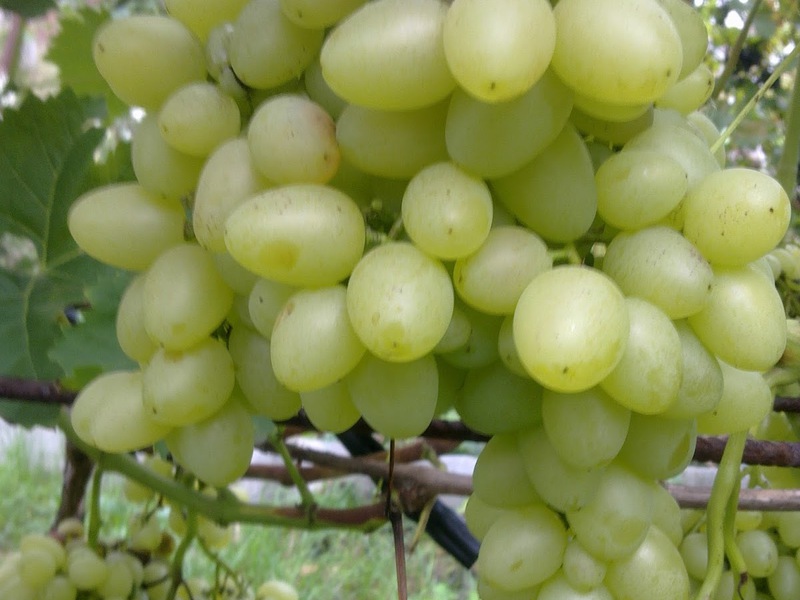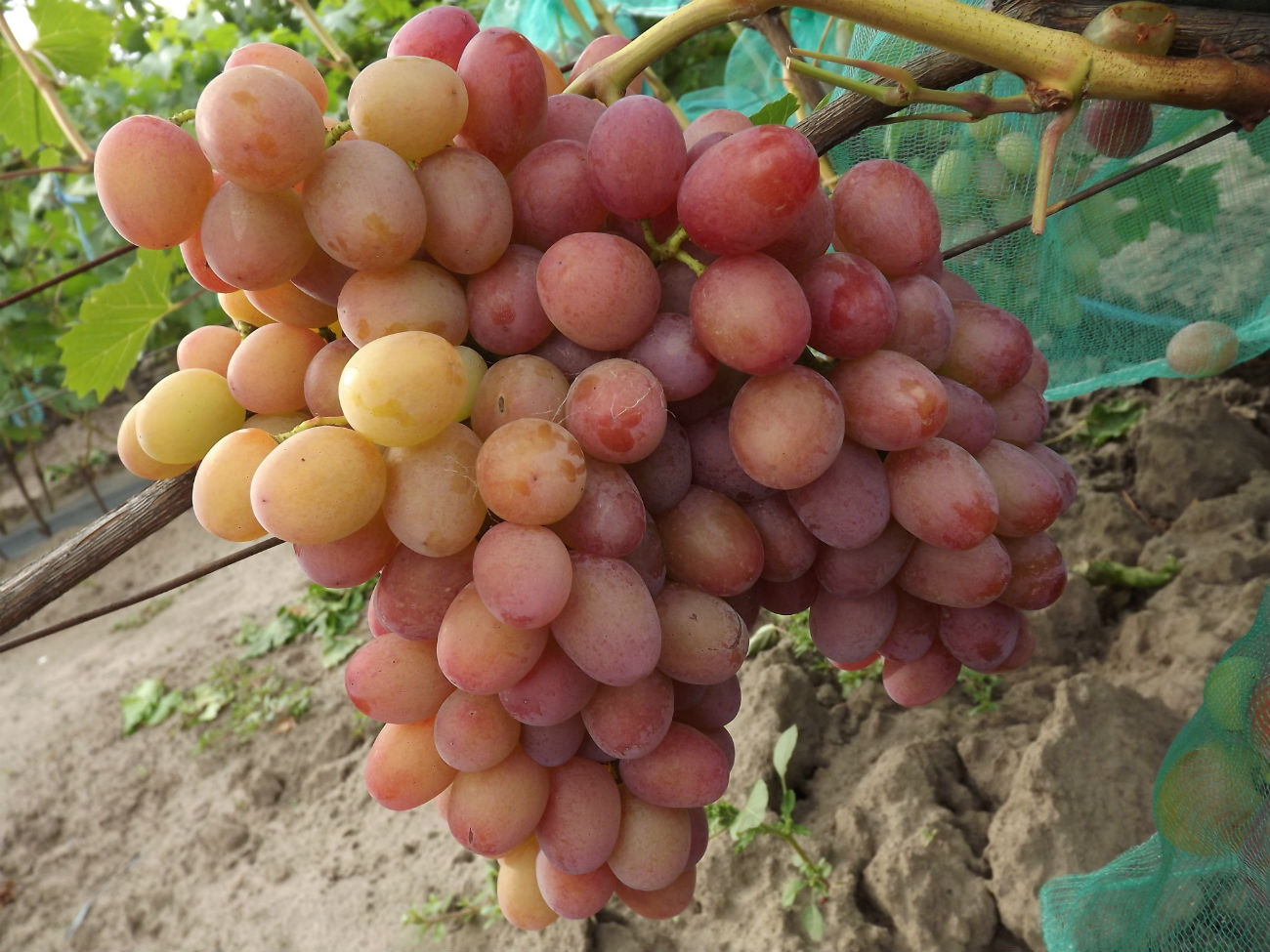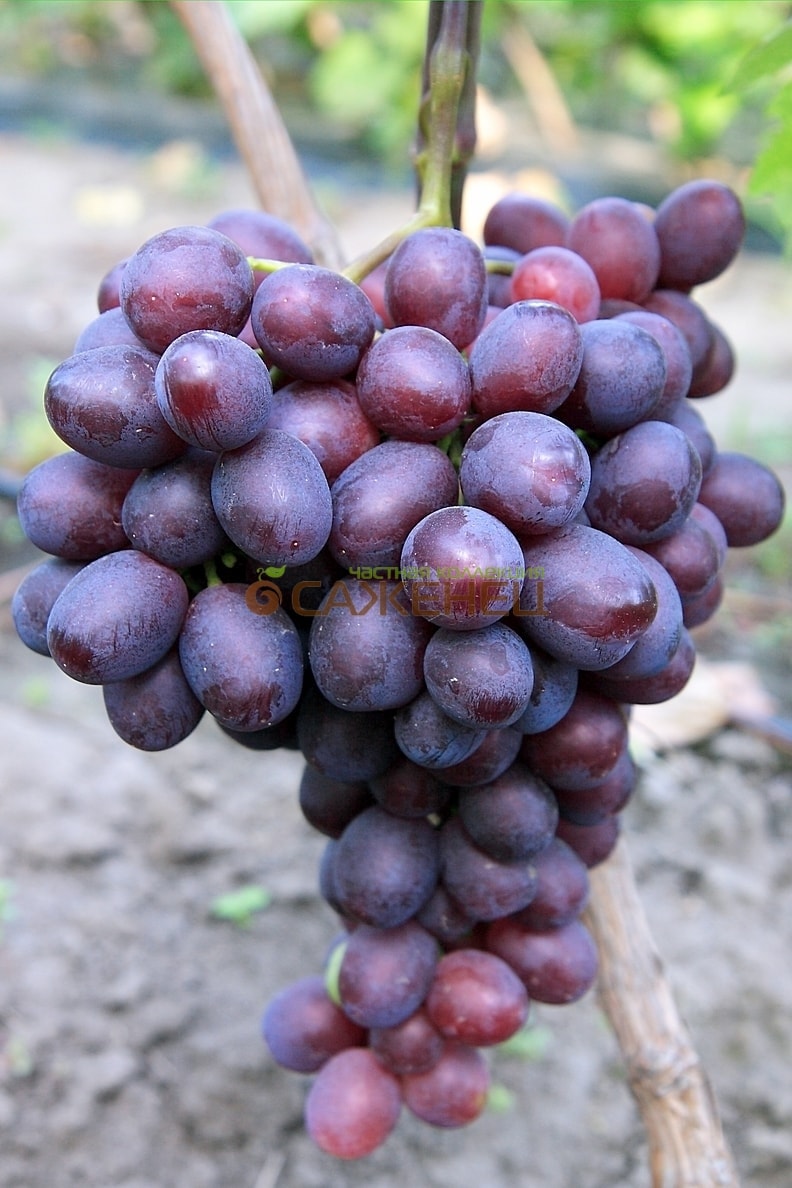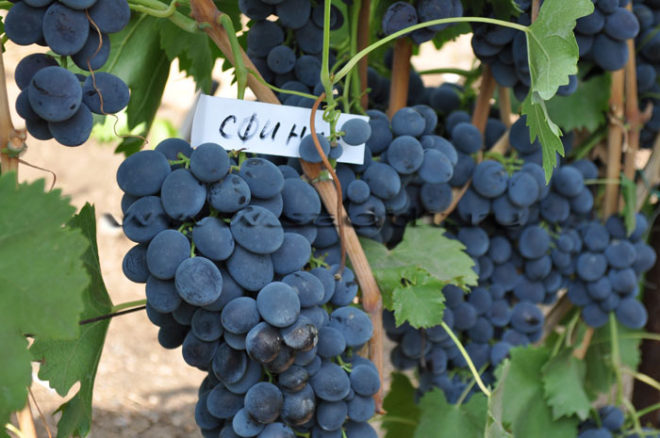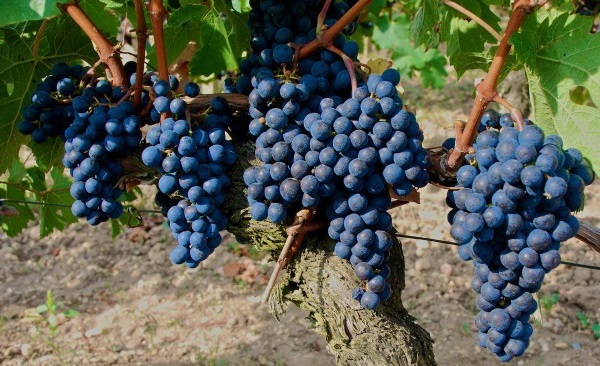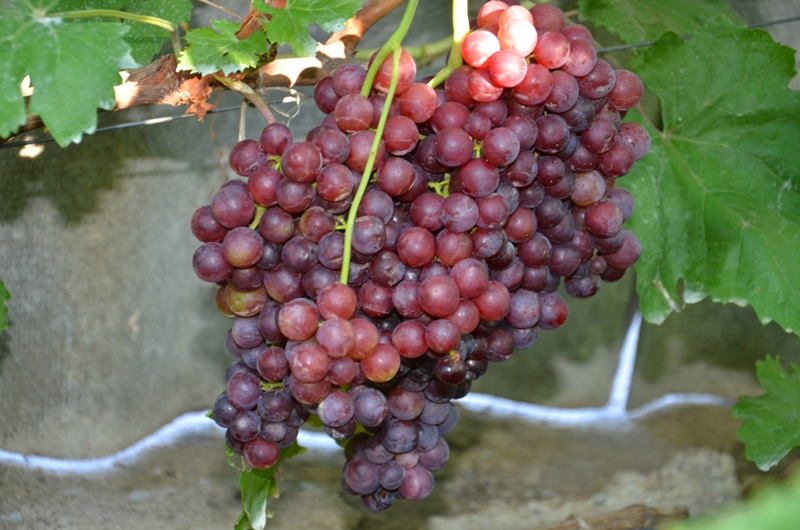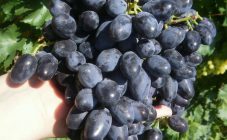Content:
Grapes are a beautiful climbing shrub with juicy sweet berries, growing bunches, everyone loves it, both adults and children. For a long time it was believed that it can only be grown in regions with a warm climate. And gardeners living in temperate or northern latitudes cannot see grapes in their gardens. But breeders have bred many different grape varieties that grow in northern latitudes. One of these varieties is the fruit grape Harold (Vinograd garold), which was bred in VNIIViV them. Ya. I. Potapenko in Novocherkassk.
Characteristic
This hybrid is obtained by crossing two varieties: Arcadia and Delight. Both parents are early varieties (ripening period 110-125 days), both have a sweet taste and excellent frost resistance. Their descendant went even further, maturation occurs in 95-100 days. The crop can be harvested already in the third decade of July, although it can hang on the vine and until mid-September - it will pick up more sweets, it will not crumble and dry out.
Harold took over frost resistance from Delight grapes, he can easily winter even without insulation, if the air temperature does not drop below 25 degrees. At lower temperatures, the vine still needs to be covered.
Description of Harold grapes
This is a vigorous massive bush, in which shoots can ripen along the entire length. But this bush has a tendency to overload, so it must be pinned. The vine is very flexible, strong and powerful, with a predominantly brown bark. Small leaves have a beautiful green color and heart shape. The flowers are self-pollinating. Young shoots are light green in color, when ripe - brownish with a tinge of red.
Small amber-yellow sweet berries weighing 6-8g are collected in cone-shaped bunches weighing 300-400g, sometimes more than 1/2 kg. The density of the brushes is medium, no cracking of berries or peas was observed.
An oval berry measuring 2 * 2.5 cm, not very large, but this is normal for such an early ripening variety. The taste is amazingly sweet, with a barely noticeable sourness, has a musky aroma and a strawberry flavor. The pulp is juicy, although not very fleshy. There are seeds in the berry. The skin is dense, but you don't feel it when eating. Harold grapes are a fruitful variety; up to 15 kilograms of berries can be harvested from one bush.
Diseases and pests
This variety has good resistance to powdery mildew and gray rot, but it still does not interfere with spraying with a 1% solution of Bordeaux mixture or fluoride fungicides before flowering in order to prevent it. This treatment will protect the vines from bacteriosis, anthracnose, chlorosis, rubella and bacterial cancer.
Wasps and spider mites do not attack these grapes, but birds are very eager, which means that you need to cover each bunch separately with a barrier net, or completely the entire bush.
Harold is not afraid of ticks and wasps, but he is very much. If you do not take any measures in a timely manner, the whole plant will suffer:
- Young shoots;
- Flowers;
- Fruit;
- Ovaries.
And on the spoiled berry, gray rot is right there. You need to process three times:
- At the first appearance of the leaf roll;
- When the first flowers appear;
- In the first decade of July.
Good ventilation is essential for prevention.To do this, the plant must be freed from unnecessary shoots and leaves. And to destroy the leaf rollers use:
- Arrivo;
- Zolon;
- Carbocin;
- Benzophosphate;
- Talstar;
- Anometrine.
Advantages and disadvantages
Grapes have many positive qualities:
- Winter hardiness;
- Early ripeness;
- Excellent taste;
- High productivity;
- Resistant to many diseases;
- Resistant to peas and fruit cracking;
- Good transportability and keeping quality.
The disadvantages include:
- Deterioration of taste when overloaded bushes;
- Susceptibility to leaf roll attacks.
Landing
This early-ripening type of grape is perfect for planting in Central and Siberia. The berries will have time to ripen, and the shoots will grow lumber.
Seedlings are selected without any damage, with a high-quality root system. Plants should be planted at a distance of about three meters from each other, since they grow very much.
It is best to plant grapes in spring, at temperatures above 15 degrees, so they will root well and they will not be afraid of the winter temperature drop. A couple of days before planting, it is necessary to place the roots of the vine in a solution of a growth stimulator. In a trench prepared in the fall, at the bottom of which drainage is laid, ash and phosphorus fertilizers are carefully placed a seedling, straightening the roots. It is necessary to make a fairly strong support between the plants so that you can let grapes on it. The roots, before planting, must be cut to a length of 12 - 17 centimeters. The plant should be watered using up to two buckets per bush and carefully covered with earth. Mulch from above.
Despite the unpretentiousness of this variety, it is necessary to properly care for the grapes:
- Water properly. The grapes should always be in good shape, it suffers from both lack and excess of water;
- Mulching is imperative;
- Correct pruning: out of every seven shoots, one is removed;
- Competent feeding with mineral fertilizers;
- Pest prevention.
If desired, with proper care and love for grapes, this sweet healthy southern berry can be grown in regions with colder climates.
